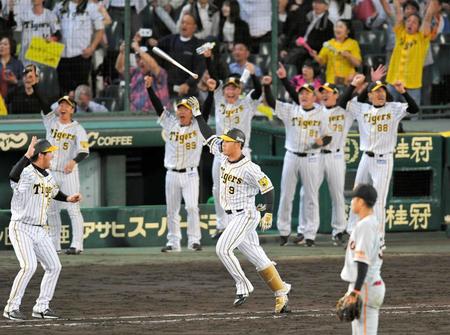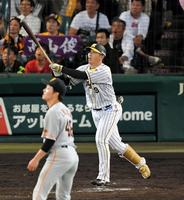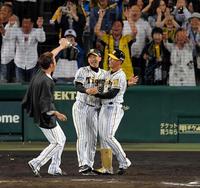But, as strange as it may seem, these are serious diplomatic events for the two leaders, who have enjoyed a close personal relationship since Trump became president in January 2017.
Officials and experts have said the top priority for Trump’s visit for both sides is to show off the two leaders’ ties and highlight a strong Japan-U.S. alliance in the face of threats from China and North Korea.
On Thursday, a senior Japanese diplomat briefing reporters in Tokyo on the visit emphasized that the purpose is “to send out signals” that “the Japan-U.S. alliance is stronger than ever” and that the two countries will take the lead in maintaining peace and stability in the region.
Separately, in news that would have been well-received in Tokyo, a senior U.S. official said Wednesday that trade would not be a top issue, according to media reports.
“I don’t think that the purpose of this trip is to focus on trade. It’s really to be state guests of their majesties,” the official said, referring to Trump’s scheduled meeting with Emperor Naruhito and Empress Masako.
For Abe, playing golf with Trump is not merely a chance to cut loose.
Rather, Abe has built up a close relationship with the U.S. president, one of the most world’s most unpredictable leaders, by using his time on the links with Trump to discuss a number of pressing diplomatic issues, according to Japanese officials.
As a result, he is now widely seen as one of the only — if not the only — foreign leaders who can speak comfortably with Trump.
Abe has pinned most of his key diplomatic policies, including those on China and North Korea, on Japan’s alliance with the U.S. and his strong personal ties with Trump are often considered a huge advantage for Tokyo — though some have criticized him for having too cozy of a relationship with the U.S. leader.
For Trump, trade issues with Japan are likely to weigh heavily on his mind. Even before he became president, Trump was known to lament what he called unfair trade surpluses with the U.S. that Japan, China and other countries enjoyed. This was even one of the key campaign mantras he deployed to drum up support with his base ahead of the 2016 U.S. presidential election.
But while bilateral trade talks with Japan will still continue, Tokyo is unlikely to give any critical concessions on agricultural and auto trade issues before this summer’s Upper House election.
Experts say it’s simply too early for the two leaders to reach any conclusions on the trade front for now.
“Abe and Trump met in Washington just last month,” said Yasushi Watanabe, a professor of American studies at Keio University. “I don’t think there are any urgent agenda items that should be discussed by the top leaders right now.”
Instead, reconfirming their mutual “understanding” of key diplomatic issues and “showing off an unshakable Japan-U.S. alliance” will probably be the top priority for the two, he added.
On Saturday evening, U.S. Trade Representative Robert Lighthizer met with economic revitalization minister Toshimitsu Motegi in Tokyo to discuss bilateral trade issues. That meeting will likely set the tone for Abe and Trump’s planned one-hour summit talks Monday.
The talks will be followed by a working lunch and a joint news conference later in the day.
However, unlike Trump’s first official visit to Japan in 2017, Abe and Trump don’t plan to issue a joint statement, according to a senior Foreign Ministry official.
This may be because there are few reasons for the two to rush sensitive issues, especially with Trump due to visit Osaka next month for the Group of 20 summit, where the two will hold another round of bilateral talks.
But one item the two leaders are expected to talk about is their approach to North Korea’s nuclear and ballistic missile programs.
According to a key senior Japanese diplomat, the North has recently stopped actively contacting the U.S. and other countries, leaving denuclearization talks between the two “deadlocked.”
“North Korea has shut itself up recently” the official said, speaking on condition of anonymity. “I think the U.S. is now monitoring what move Pyongyang will make first.”
On Tuesday, the final day of Trump’s visit, in what experts say is part of a concerted effort to demonstrate strong ties, Trump and Abe are scheduled to board the Kaga — Japan’s largest warship along with its sister ship, the Izumo — at the Maritime Self-Defense Force’s base in Yokosuka, Kanagawa Prefecture.
The Kaga and Izumo helicopter carriers are due to be remodeled into de facto aircraft carriers. The Izumo is on deployment in the Indian Ocean after conducting joint exercises with the U.S. and several other countries in the disputed South China Sea.
Trump will try to “demonstrate that the Japan-U.S. alliance is effective and firm against China and North Korea” during his visit, said Kazuhiro Maeshima, a professor at Sophia University and an expert on American politics and diplomacy.
“That’s a very important message, although it may look like (Abe and Trump) are just having fun,” he said.
Separately, a senior Foreign Ministry official emphasized that the two leaders would touch on a wide range of diplomatic topics during Monday’s summit meeting and that it was very difficult to predict what they would talk about, given their strong personal relationship.
Japanese diplomats, meanwhile, were preparing to pull out all the stops for Trump, arranging a red-carpet treatment to play up the strong bilateral relationship angle, the official said.
Officials are apparently trying to take advantage of the festive mood in the country in welcoming Trump after the start of the Reiwa Era earlier this month.
On Monday, Trump will meet Emperor Naruhito and Empress Masako, becoming the first state guest to meet the imperial couple since the emperor ascended the Chrysanthemum Throne on May 1. “He is the first state guest of the Reiwa Era,” the official said. “We definitely want to make this visit a success.”










































































